






This booklet is prepared within the framework of the project, coordinated by Colors of World Youth Community, entitled “Entrepreneurial Ideas: Intergenerational Transfer of Traditional Productions” and numbered 2021-1-TR01-KA153-YOU-000007154.
“Entrepreneurial Ideas: Intergenerational Transfer of Traditional Productions” project is funded by the European Union. Views and opinions expressed in this material are however those of the author(s) only and do not necessarily reflect those of the European Union or the European Education and Culture Executive Agency (EACEA). Neither the European Union nor EACEA can be held responsible for them.

Colors of World Youth Community ©2023 Ankara




Due to the rapid increase in the world population and the limited economic, educational, and geographic opportunities of young people, youth unemployment is an important problem in many countries of the world. As of the 2020-21 period, the current problem of youth unemployment, especially due to the COVID-19 pandemic, continued to increase in both Turkey and EU countries. According to Turkish Statistical Institute (TURKSTAT) the youth unemployment rate, which covers the youth between the ages of 15-24 in Turkey, has been determined as 26.1% in 2020. Besides, according to European Statistical Office (EUROSTAT) the youth unemployment rate in the European Union increased by 184 thousand people compared to January 2020 and rose from 15% to 16.9% in 2021. In some EU member countries, this rate was calculated as follows: 39.9% in Spain, 29.7% in Italy, 18.4% in France, 24.1% in Sweden and 15.3% in Hungary.
One of the main issues that our project addresses are the lack of interest in local cultures among youngsters. The sociologist writer Ayla Bağ, in her book “Living Legends, The First One and the Last Masters” (2020), emphasizes that traditional and artisanal production (jewellery making, tile crafting, cottage cheese making, etc.) are gradually disappearing and young people are not interested enough in these production ways anymore. The fact that these products, which are important symbols of our culture, do not attract the attention of the youth, also prevents the transfer of these production methods, which are the carriers of the culture, from generation to generation.
Our project entitled “Entrepreneurial Ideas: Intergenerational Transfer of Traditional Productions” aims to raise awareness among youngsters, and youth workers, and improve their capacity on entrepreneurship by promoting traditional and artisanal production in order to get over the difficulties of unemployment.
The project “Entrepreneurial Ideas: Intergenerational Transfer of Traditional Productions” also aims to:
• Improve youngsters and youth workers’ entrepreneurial skills.
• Improve youngsters and youth workers’ technical skills on traditional and artisanal production.
• Raise awareness of youngsters and youth workers on youth field.
• Promote intercultural exhange.
• Create a safe space where the participants express themselves freely and improve their language skills.

The coordinator of the project, Colors of World Youth Community is a youth-led initiative based in Ankara, Turkiye. It was established in 2018. The organization comprises teachers, communication experts, psychologists, engineers and students.
Colors of World Youth Community focus on youth, environment, culture and, social entrepreneurship. It has been working to promote cultural, social and environmental values among young people. The organizaiton aims to encourage young people to get out of their safe zone and, meet different cultures and people.
The association was founded in February 2017 in Latvia with the aim of promoting the informal education of young people and the improvement of professional skills. Over time, as the organization has developed, its scope has expanded. Currently, YOU+ unites more than 100 members, who are looking for new growth and development scenarios, perspectives and challenges at every step.
“ArTeam” Bulgaria is a youth association established in 2016 in Sofia, Bulgaria, as a local youth initiative with the aim to create a platform

for the development of projects, activities, partnerships and programs for youngsters, volunteers and youth workers which will give them opportunity to be active in their communities, learn new skills and competences, and gain experience and knowledge for personal and professional development.
To achieve the ideas and objectives, the team of “ArTeam”, headed to:
• taking participation in organizing various workshops and trainings with national and international partners;
• the organization of workshops at local and international levels;
• helping young people in their professional and personal development by providing information about participation in various international projects.


The Hungarian Turkish Friendship Platform was founded in 2019 by Hungarian young people studying in the Department of Turcology in Hungary. The community, consisting of young people with vision and aiming at local social change, supports the fusion of different cultures.
The Casorate Sempione Municipality is a public institution located 40km northwest of Milan, Italy. The main areas of focus of the institution are: social work, public education and

culture. Trying to spread the sustainable environmental culture to all levels of the society, Casorate Sempione Municipality supports especially young people to stay away from bad and harmful activities and habits. In this context, it cooperates with schools, unemployment centers, youth centers and many different social enterprises. The municipality is highly experienced in organizing cultural events thanks to its cultural and library services. It also actively participates in many cultural, artistic and musical events with other organizations.
The Green Elephant Foundation (Fundacja Zielony Słoń) is an NGO located in Lublin, Poland. We organize events in Zakopane, the winter capital of Poland in Tatra Mountains, Lublin and in rural region of eastern Poland. The foundation has been established by a Polish writer, Mr. Jacek Rębacz. Since then are committed wholeheartedly to the development of education level among the adults and the youths particularly with use of non-formal education methods.
Green Elephant Foundation is experienced both as a coordinating institution and as a partner in European and national projects in the field of non-formal education and vocational education.

The partner organization from France is an organization, which creates opportunities for young people who would like to be an active, try and
learn something new and gain new experience and knowledge for personal and professional development. They want to enrich the educational, social and cultural life of young people living in France, mainly young people with fewer opportunities. The organization believes that young people must become a driving force in building the society in which they live and therefore they create various opportunities in order to help shape a generation that is determined to change the world for the better.

Viaje a la Sostenibilidad is an independent, environmentalist and social non-profit organization based in Zaragoza (Spain). They are experienced as host and partner organization in diverse projects of KA1 and KA2 actions.

Viaje a la Sostenibilidad promotes cultural exchange and mutual understanding between young people and local youth participants. They organize awarenessraising actions with talks, meetings and graphic materials.
The organization has a great network of local contacts related to sustainability and youth, but it is committed to establish an international network about bioconstruction, permaculture, rural life and green economy.
The project’s activities were held between 11-19 October 2022 in Hatay, Turkiye, with the participation of 33 youth workers from Turkiye, Hungary, Spain, Italy, Poland, Latvia, Bulgaria, and France. Project activities generally aimed to raise awareness on youth entrepreneurship and the importance of traditional production. But also aimed to support the participants gaining new skills -both hard and soft skills- and knowledge on traditional production methods of the participating countries, business development, and marketing etc.




We organized multiple group activities in order to enable the participants to get to know each other better and to share their knowledge about the project topic with each other and support them to learn new information.


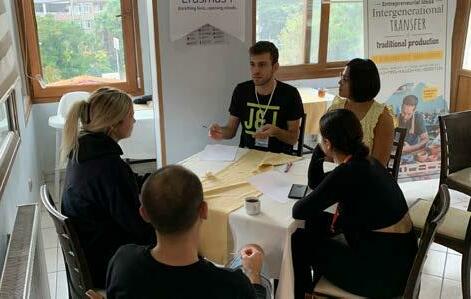


 Group Activity: Price It!
Team Building Activity: Squid Game
Team Building Activity: Scavenger Hunt
Group Activity: Ways to find investment for your enterprise
Group Activity: Price It!
Team Building Activity: Squid Game
Team Building Activity: Scavenger Hunt
Group Activity: Ways to find investment for your enterprise
Within the framework of our project activities we visited various places/institutions:
With our 33 participants from 8 countries, we visited Defne Koza Evi Sericulture (Silkworm Breeding) Atelier, where local women receive training on silkworm breeding and produce silk products. The manager of the atelier gave a great demonstration on how to produce 100% traditional silk and silk products and how they market their silk products.

We visited Harbiye District, famous for its workshops and local bazaar where local people produce and sell their traditional handmade products such as silk products, serpentine stone accessories, laurel soap, local cheeses, and pomegranate sauce.
We visited EXPO 2021 Hatay, whose theme is “Garden of Civilizations”. In the site, we visited the botanical museum, the gastronomy village, the international city gardens, the art and culture street, and the world’s largest one-piece floor mosaic.

 Defne Koza Evi Silkworm Breeding Atelier
Harbiye District
Defne Koza Evi Silkworm Breeding Atelier
Harbiye District
With the active participation of all participants, we organized 2 different workshops: a traditional pomegranate sauce-making and a laurel soap-making workshop.
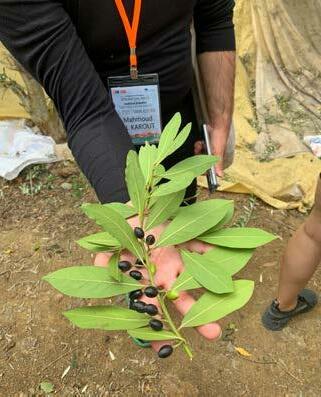
Our participants received a technical training (workshop) from a local woman entrepreneur on Hatay’s traditional laurel soap. Through the workshop, they made olive oil and laurel oil-based soap in a traditional way from scratch.


In a garden which is on the mountains of Antakya, our participants prepared Hatay’s traditional pomegranate sauce through 100% traditional methods.










Each country team presented their country, culture and the traditional and artisanal products from their countries. They generously offered all participants the foods and beverages they brought from their countries. The participants also had lots of fun with the mini-shows and contests about their culture organized by the presenting team.




The participants visited the Hatay Archaelogy Museum is claimed to be the largest mosaic museum in the world (www.muze.gov.tr). It is one of the most prominent mosaic museums in the world because of the exquisiteness, size, number and quality of the mosaic collection, tessellated with detailed and unique colored stones. It also has a rich, world-wide coin collection minted in the Antakya Money Mint Factory. The collection covers all the time periods starting from the earliest era.



When you think about it, starting a business and creating something new is a pretty big deal. You have to be willing to take risks and put your own money on the line in order to see your idea come to life. Entrepreneurship is all about taking those risks, and making yourself vulnerable for the sake of something that might change the world for the better.
Essentially, entrepreneurship is the process of developing, organizing, and running a new business to generate profit while taking on financial risk. In a broader sense, entrepreneurship is the process of transforming the status quo by solving the most pressing problems and pain points in our society, often by introducing an innovative product or service or creating new markets.
The importance of entrepreneurship is obvious when you consider that it creates jobs—people need to eat, after all! And not just food: they need clothing, transportation, shelter, and all kinds of other necessities as well. The world would be a pretty boring place without entrepreneurs, who create new industries and products that make life easier for everyone!

There are thousands of examples of entrepreneurs throughout history who have made huge contributions to society by starting businesses that have created jobs for people around the world and helped make our lives more comfortable. Some examples are: Elon Musk (Tesla), Steve Jobs (Apple), Jeff Bezos (Amazon), Bill Gates (Microsoft).
While the basics of entrepreneurship are the same the distinct points and skills needed vary depending on the business. Becoming an entrepreneur requires the ability to define these differences.
Traditionally, entrepreneurship is categorized into five primary types: small businesses, scalable startups, large company entrepreneurship, social entrepreneurship and innovative entrepreneurship.
Small business entrepreneurs are focused on creating and running their own businesses, either on their own or with the help of family members. For example, if you were planning to open a restaurant, a small market or an ice cream shop your goal would be to launch a single store. You’d likely plan on hiring local employees or family members to get your business off the ground and would need to invest your resources directly into the business.
Typically, small businesses aren’t focused on rapid growth and expansion. They seek to make a living from their business activities and generate enough profit to support their family and lifestyle.


Scalable startup entrepreneurs dream big, focusing on innovative ideas that can expand their business and generate as much profit as quickly as possible.
Rooted in the idea of changing the world, scalable startups focus on how to create a business model that is both repeatable and scalable (more sales with more resources). Amazon, Google and Apple are all examples of scalable startups that have changed the world.
Find a gap in the market and focus on filling that need
Seek to create a scalable business that’s ready to expand and serve a larger market
Have high margins, as well as a lean and agile staff prepared to pivot as the business grows
Some businesses naturally grow over time, and large company entrepreneurship aims to grow a large company from an existing business model.
This type of entrepreneurship is for advanced professionals who know how to sustain innovation, often part of a large team of C-level executives. Large companies often create new products and services based on consumer preferences to meet market demand. Companies such as Google, Microsoft and Samsung are examples of this kind of entrepreneurship.
Social entrepreneurs seek to offer solutions to important social problems, which may include:
• Addressing social inequality,
• Engaging with environmental concerns,
• Supporting more equitable economic development.
Some social entrepreneurs may start a nonprofit, whereas others pursue profitable business ventures that give back to the community.
Social entrepreneurs have a strong vision for the world, and the financial goals of social entrepreneurs are centered on the company’s mission, often with a focus on effecting social change.
Developing new ideas may require challenging yourself continuously and exploring new paths or methods. This type of entrepreneurship can help professionals focus on collecting ideas from a variety of places and find enough data to build the perfect strategy to implement these ideas. Entrepreneurs can introduce innovation to the business through product development, process improvement, service and business model improvement.
Here are some examples of success through innovation:
Apple: it changed music and consumer electronics
Uber: It changed the taxi business. Airbnb: It changed the accommodation industry.
Whatsapp: It revolutionized the interpersonal communications market.
Blueland is a social enterprise that sells plastic-free alternatives to home essentials, such as cleaning sprays and paper towels. Sustainability is at the heart of its mission and is woven into its content marketing that educates readers about sustainability and single-use plastics.

It aims to make it easy to be eco with innovative products in reusable packaging that are convenient, effective and affordable.”
Its products helped eliminate one billion single-use plastic bottles from landfills and oceans since 2019.
Young people are one of the most important actors for the future of our world. In order for them to be supported, and turn their ideas into real projects, their entrepreneurial spirit needs to be revealed and supported in different ways. Unemployment, and especially youth unemployment, is one of the most important problems in all countries. In this sense, the importance of entrepreneurship cannot be denied in terms of emphasizing the importance of employment and reducing youth unemployment. Entrepreneurship is not only about creating new opportunities in the business world. From a wider perspective, it is about being open to innovations at every stage of life and directing youngsters’ energy correctly.
Youth entrepreneurship is a process whereby creative and innovative ideas are transformed into enterprises initiated and managed by young people with the primary purpose of addressing their socio-economic challenges such as poverty and unemployment.
To provide an opportunity for the Youth to get hands-on experience and increase their awareness of the business and economic environment industry and business organisations should be involved in youth entrepreneurship programs at the college level.
Youth meets, seminars, festivals, and fairs, as well as using print media in the form of brochures, and banners, and interviewing successful
entrepreneurs in the media are sure to build awareness and enthusiasm amongst the youth as well as change the perception of entrepreneurship in the society.
Seeing someone taking up entrepreneurship and going on to become a successful entrepreneur does make other aspirants more confident of trying his or her hand at starting on their own. Success always prompts people to take risks and help the families and society accept the idea of encouraging the youth to take up entrepreneurial ventures.
Erasmus for Young Entrepreneurs is a cross-border exchange programme which gives new or aspiring entrepreneurs the chance to learn from experienced entrepreneurs running small businesses in other Participating Countries. (erasmus-entrepreneurs.eu/)
Most new entrepreneurs do not think so much over the choice of business-ideas; they want to start a business, which will be similar to those businesses that are already exist in the particular market. The business idea which was selected according to this principle commonly sounds like: “I will sell olive oil soap as my friend is doing.”
Can such idea be successful? It can, but the existence of the examples in the particular trade shows that a sufficient number of people are already engaged in this business. If this business is so widespread, it has a high competition too.
Think about business ideas and in the first column write down all the business ideas that will come to your mind. Then in the next columns fill the external and personal factors.
business idea.
idea
only
Business
of business-idea.
Why this business will be successful?
Making of Natural Olive Oil Soap
1) Hand-Crafted Artısanal products are more valued.
2) People are more tend to buy natural, organıc and hand-crafted products.
Are there any factors that can cause this business to not be successful?
1) Hand-Made soap is more expensive.
2) a lot of competetors ın the market.
3) Lots of companıes offer cheap and unnatural lıquid soap.
Why I should do this business?
1) I have skılls and experience to make natural soap.
2) I am able to do it in my home.
Why I should not do this business?
1) I am not good at marketing and selling.
2) I don’t have enough network to make a business.
The foundation of any business plan is a
But
is
a general idea of what you need to do. It can be expressed in one sentence, for example: “I will make hand-crafted coffee cups at home!”
idea is only the beginning of the path to the business plan, but success of the business highly depends on the correct choice
The business plan is a communication tool, which can express your idea to others, and serves as a “selling tool”. It provides the basis for your financing proposal, specifies the amount and type of financial needs.
If you won’t use the plan to raise money, your plan will be internal and may be less formal. If you are presenting your plan to outsiders as a financing proposal, then the quality of presentation and financial analysis are very important.
A well-structured, attractive written business plan is an essential document, to provide a benchmark against which to compare actual company performance, and to refine strategies and develop ideas on how the business should be conducted. From a practical standpoint, a business plan serves as a roadmap for how you plan to grow the business and take it to the next level.

Is there a market? How much can ı sell? Does the management team have a skill?
Is the business profitable?
1.1. Brief description of the project
1.2. Brief characteristics of the entrepreneur
1.3. The contribution of the project into the economy of region
2.1. Description of the product
• What type of product?
• What are the special characteristics and uniqueness of the product?
• What is the quality of the product?
• What is the amount of the product (output)?
• What is the assortment of the product?
• What kind of service is offered with the
• product?
• What type of package? Why?
• What should be the shelf life of the product?
• What are the features that are ensuring quality of the product?
2.2. Comparison of our products with the products of competitors
• What are the quality and price of products and services of competitors compared to your products?
• What is their reputation?
• Do buyers loyal to them?
• What is the size of their business (quantitative assessment)?
• What kind of guarantees they are offering?
• How they distribute their products?
• How effective the way of their distribution?
• Do they have the reliable financial resources?
• Do they carry out business management well?
2.3. Location
• Where your business (address) going to
be located?
• What are the benefits of the location?
• How is the location in relation to the main roads, water supply, electricity and telecommunications?
• What is the impact of your business on the environment?
• How is the political situation in the region of your business?
• How is the tax system?
2.4. Market area
• Which geographical regions will cover your business?
• What are the product distribution channels, and through how many retail selling points the products are going to be carried out?
• What are the means of the product transportation?
• Do you use your own or other means of transportation?
• How will the goods be transported?
• What kind of opportunities do you use to store the products?
• Do you use any kind of product storekeeping to save them in good condition?
• How is the information spreading about this product?
2.5. The main consumers
• In which markets are you going to sell your products?
• Who will buy your products?
• What factors are making them to decide to buy your products?
• What is their level of income, or to which groups they are belong?
• What shops they are visiting to buy products?
• Are they doing the comparison shopping?
• What kind of promotion will encourage them to buy your products?
2.6. The volume of demand
• Is it possible to estimate the volume of products which are selling at the present time?
• What is the demand for your product?
• How often customers buy your product?
• How do they react to the quality and the price of your products?
• What kind of special qualities of products they would like?
• How much do they want to pay for your products and services?
• How much customers are satisfied with your products?
2.7. Market share
• What is the market share or percentage of your business?
• What kind of activities will be done in order to expand the market share?
2.8. Selling price
• What will be the selling price of the product?
• What is the policy of price differentiation?
• Will you offer the special price for a mediator?
• Will you offer any discounts?
2.9. Forecast of sales
• What will be the volume of selling products?
2.10. Promotions
• What kind of tools will be used for advertisement of goods?
• What kind of advertisement will be used?
• How do you determine advertising budget?
• How do you choice the media (newspaper, radio - local, social media, television, etc.)?
• What kind of text and design you will use for advertising?
• What is a schedule of advertising campaign?
2.11. Marketing expenses.
• How much money you will need
3.
to advertise and to distribute your products?
3.1. The business form
• How will be organized the business?
3.2. Organization structure
• How will be the management of the business?
• How will be the description of organizational management structure of the enterprise?
3.3. Experience of business and skills of entrepreneurs
• What is an entrepreneur experience in the business? What is his qualification?
3.4. Work in the preoperative period
• What preoperative activities necessary to do?
3.5. Preoperative expenses
• What preoperative expenses will be in your business?
3.6. Office supplies
• What fixed assets will be required for office equipment?
3.7. Administrative expenses
• What will be the administrative expenses?
4. Financial Plan
4.1. Project cost
• How much capital is required for the project?
4.2. Financial plan and the need to receive a loan
• Do you need to receive a loan? What will be the contribution of the entrepreneur? What is the loan amount?
4.3. Credit collateral
• What kind of collateral can be provided?
4.4. Profit and loss
• What does the statement of profit and loss?
4.5. Cash flow statement
• What does the statement of cash flow?
4.6. Financial analysis
• Is the project achievable?
Imagine you will be an entrepreneur and you will calculate the price of your services and products. You should fill in the below list, it help you to calculate the price.
Think of a meaningful name has a story behind
Lastly, imagine your enterprise ten years from now.
• What does your business’s name make people feel?
• What colors do you use?
• What is the story behind your business?
• Is your business’s name trustworthy?

• Do people from all over the world want to buy the





As an entrepreneur, you face many challenges. But, none are as big as finding money to start your new business. In many cases, traditional lenders avoid granting loans to entrepreneurs, especially to new starters. You can take the risk by using your own savings if you have any.
However, if you don’t have your own saving, there is no “right” way to fund your enterprise, whether you’re looking for startup funding or to maintain or grow your existing enterprise. Some types of funding work better for different stages of your business, and sometimes the right answer might be a combination of funding types.
Incubators and accelerators are specialized types of resources that are geared specifically to help business owners prepare for when they look for investors. An incubator helps entrepreneurs formulate solid business ideas, work with a business plan, and generally work on a flexible schedule until the business idea or product is ready to pitch to investors. Accelerators do precisely what they sound like: accelerate the growth of existing businesses.
Business investors are organizations or individuals who invest money into a business to help it start or expand in exchange for some control over the business. This is usually anywhere up to 49% control,which also includes a percentage of profit shares. Investors, after all, want to see a return on their investment.
See also: Venture capitalists, Angel Investors
Financial institutions that offer business solutions can vary. Some offer loans to businesses with established credit history and high sales volume, whereas others will take a risk on new businesses with small sales volume and little established credit or poor credit history. It’s always safe to assume that the better the business credit and sales, the larger the loan, and usually, a much better interest rate and payment terms.
Crowdfunding is a type of investment where everyday people invest or donate a small amount of money into a new business or business idea. These investing or donating individuals are not wealthy investors or venture capitalists.
Here are a few platforms for crowdfunding: Kickstarter, Indiegogo, Crowd Supply, Wefunder, Fongogo
Grants are ideal because they are money awarded to successful grant applicants that they don’t need to pay back. The grant programs can range from a few thousand dollars to $250,000 or more, depending on the size and type of business. Research and development, particularly in agriculture, tend to have the highest grants available.
Every enterprise wants to grow its business. Growing a business requires the right intellectual capital, carefully selected strategic partnerships, and products and/or services with strong marketplace demand. Beyond these fundamentals, sustaining growth requires a strong operational foundation – to reduce the risks to the business over time.
If you want your business to grow and sustain its momentum, you should take the following six things into consideration:
Business is about people, and without the right people, an enterprise can’t grow and mature. Usually, this requires an enterprise to refresh its talent pool in support of its business model and the needs of its clients.
Successful leaders are instinctual decision-makers and thus have the vision to see an opportunity in everything. Over time, a successful leader becomes immune to pressure situations and intuitive about making strategic, longterm plans for the future.

Embracing an entrepreneurial attitude allows you to see beyond what is seen and spot the best clients for your business model. This keeps procurement costs low and secures client relationships are mutually beneficial and goals are in alignment.
Efficiencies drive costs down and embed a mindset within the workplace culture that makes people sensitive to costs and ways to streamline how the organization communicates, operates and connects the dots of opportunities.
As an entrepreneur, our goal is supposed to be minimizing the occurrence of problems. Therefore, our enterprise should have a protocol, and standard operating procedures to solve problems and make decisions under unexpected circumstances.
Entrepreneurship is a team sport. It is essential to build a great team to tackle. Then get down to business and don’t be afraid of temporary failures. If you can properly manage these failures, they become part of your training process. Also, join a group of other likeminded entrepreneurs so that you will not only learn a lot, but this group will support you as you progress through the process.

An artisan product is one that is made in a traditional manner. Often an alternative name will be used like traditional, farmhouse, natural or heritage. Traditional and artisanal production refers to the production of goods using techniques and methods that have been passed down through generations, often by hand and using traditional tools and materials. These techniques are often used to produce goods that are considered to be of high quality and have cultural or historical significance.
Countries, regions and industries will classify and consider traditional and artisanal product differently. But, in general, this type of product usually meets one or more of the following criteria:

It is produced on a small-scale or in small batches. It isn’t mass-produced or farmed on an industrial scale.
It is made using traditional methods and tools – usually being hand-crafted as opposed to industrially made.
It is created according to a traditional recipe that may have been around for hundreds of years. Meaning there are very few, if any, modern ingredients. Like preservatives, colourants, sweeteners, thickeners or other chemicals.
It is made locally, not imported from another country.
It is traceable or is made from traceable ingredients. Establishing provenance is a key aspect of artisan.”
So many of the things we enjoy today have been made by hand, with traditional techniques passed down from generation to generation. This is true for everything from pottery to textiles to furniture, and it’s a treasure that needs to be preserved.


There are several reasons why traditional and artisanal production is important:
Traditional and artisanal production helps to preserve cultural traditions and practices that may otherwise be lost in an increasingly globalized and industrialized world.
Traditional and artisanal production often uses locally-sourced materials and is less reliant on mass production and automation, which can be more environmentally sustainable.


Traditional and artisanal production often results in goods that are of higher quality because they are made with care and attention to detail.
Traditional and artisanal production can contribute to the economic development of communities by providing employment and income for artisans and other workers.
Traditional and artisanal production often produces unique and one-of-a-kind products that mass production methods cannot replicate.
As we are all aware of it, there is a lack of jobs and a lack of income among youngsters. There’s no shortage of articles explaining this problem, but what if there was a way to fix it? What if there was a way for young people to not only find a job but make their own money?

According to the European Commission, in November 2022, 2.880 million young persons (under 25) were unemployed in the EU, of whom 2.353 million were in the euro area. In November 2022, the youth unemployment rate was 15.1 % in the EU and in the euro area, both up from 15.0 % in the previous month. Compared with November 2021, youth unemployment increased by 180 000 in the EU and by 157 000 in the euro area.
As Colors Of World Youth Community, we believe that entrepreneurship is one the most proper solutions that could help solve this problem. Young people worldwide are supposed to be supported to start their own enterprises or learn how to run existing ones better. Through our project “Entrepreneurial Ideas: Intergenerational Transfer of Traditional Productions”, we aimed to support young people learn how to identify problems in their community and find solutions for them by starting businesses that cater directly to those needs, specifically in the field of traditional and artisanal production.
Culture and traditions, which are maintained between generations and shared with a sense of personal identity and social awareness among people, can be sustained by the initiatives of young entrepreneurs in this field. Through traditional and artisanal products created and sold by young entrepreneurs, cultural values that are in danger of extinction can be kept alive and new and sustainable business areas can be created for young people.


Laurel soap is a handmade, hard bar soap associated with the city of Hatay, Turkiye. Laurel soap is classified as a Castile soap as it is a hard soap made from olive oil and lye, from which it is distinguished by the inclusion of laurel oil.

But, before we start, let’s get some information about soap and soap-making.
splinter over time when exposed to lye.
Basically, soap is an emulsifier and surfactant. Emulsifier is a substance that creates an environment in which water and oil can mix. Soap cleans your skin by emulsifying oil and water together. The emulsified mixture is then rinsed off, leaving behind squeaky-clean skin.
In soapmaking, a combination of base oils, such as laurel oil, coconut oil, olive oil and almond oil, is mixed with a lye solution. The chemical reaction, which then takes place, is called saponification.


Digital Scale: Most soap-making ingredients, especially the oils and lye, need to be weighed using a scale. Make sure it has a tare button to zero out the weight of the measuring containers.

Mixing Utensils: Stick to spoons and spatulas made out of silicone, hard plastic or stainless steel. Mixing soap with a big wooden spoon might be a romantic notion, however, you should avoid wood as it can
Stick Blender: You will need a stick blender or immersion blender to blend the soap. Although this isn’t necessary, it does help cut down on the mixing time to bring your soap to emulsion and trace.
Mold: Soap is fluid when poured. You will need something to it as it hardens overnight. There are many types of molds you can use for soaping ranging from more expensive wooden loaf and slab molds to inexpensive “found” molds including Pringles cans, yogurt cups and shoeboxes.
Containers for Weighing out Oils and Mixing Soap: We recommend using a stainless steel pot or a large glass bowl. Sodium hydroxide reacts with aluminum, creating hydrogen gas, so make sure that the only metal you use is stainless steel.
these are the laurel berries
This is a pretty simple soap to make. You’ll need olive oil, laurel oil, sodium hydroxide (lye) and water.


Don’t confuse laurel oil (made of laurel berries) with bay laurel essential oil (made of laurel leaf). They are completely different. Laurel berry oil is a base oil that saponifies. Bay laurel essential oil is just that…an essential oil.


In Hatay, usually, people use 20-30% laurel berry oil and the rest olive oil. In the recipe below, We use 30% laurel berry oil.

Laurel soap is usually done using a hot process method. Click the links below for some videos about the hot process.
Easy Hot Process Traditional Olive Oil Soap Making How to Make Hatay Laurel Soap Basic Natural Soap Making
But, here we’ll simply show you how to make cold-process soap. Let’s start with the ingredients:

Step 1
Make your lye solution. Weigh the water and lye into separate containers. Pour the lye into the water while stirring. Be sure to mix your lye solution in a well-ventilated area.
Weigh out your laurel berry oil into the container that you’ll be mixing your soap in.

Step
Weigh the olive oil into the same container.



Sodium hydroxide (lye) is a highly caustic chemical. Contact with skin and eyes can cause severe irritation, burns and blindness.
When handling lye, you must wear safety goggles to protect your eyes and gloves to protect your hands. One splash of lye solution into your eye can permanently damage your eyesight.
Always make sure your environment is free from distractions including pets, children and other family members.
When making your lye solution, always add your lye to the water- NEVER add your water to the lye or a volcanic eruption can occur.
If you get lye on your skin, flush with water. If you get lye on a surface, neutralize with vinegar and rinse/wipe up with water.
The laurel berry oil can have chunks of fruit in it. Use your stick blender to make sure it is 100% blended and pureed.
Step 4
Once your lye solution has cooled down to 55 degrees Celcius or below, pour it into your oils and mix to trace.




Step 5
Once you reach trace, pour into your mold.
Let your soap sit for 24 hours, unmold and cut your soap.

Cure your soap. Since this is a high-olive oil soap, you’ll want to give it a nice long cure. At minimum, cure for 6-8 weeks. A 6 month to 1 year cure is even better!


Pomegranate molasses is a traditional ingredient in Turkiye and Middle Eastern cooking and can be used in a variety of dishes. It’s tangy and bright in flavor, and it’s easy to make at home! It can be used for dressings, sauces, or roasts.
It’s actually quite easy to make. All you should do is boil down pomegranate juice for about 1 hour or more, and that’s it. The duration of boiling process may depend on the amount of the juice that you want to boil.



Step 1
To start extracting the juice, you must deseed the pomegranates first.


You can also use either a blender, food processor or juicer. It is better to use a food processor with a plastic kneading attachment.

Then, with a very fine mesh strainer or cheesecloth, strain the seeds thoroughly.
Now you should extract the juice. Traditionally, people in Hatay do it by crushing them out with their hands and straining the juice into another bowl. In this way, the seeds will not be crushed and you will get only juice.
Press down with a spoon or a spatula to extract as much juice as possible. You could also use your hands -with pair of rubber gloves- to squeeze the juice.
To make pomegranate molasses, simply put the pomegranate juice in a saucepan. Stir it over medium heat until it comes to a boil.
Let cool down for 3 to 4 minutes and check if the consistency is right. At that point, you can check the consistency by putting a small drop on a plate, allowing it to cool to room temperature. If it holds its shape and is a bit thick it is right. If it is too thin, allow it to simmer a bit longer, checking it occasionally.
Keep stirring as it boils. Allow it to reduce until it is just 1/4 of the original volume of the juice. When it is almost done, upon stirring it, you will see the pomegranate molasses bubbles rapidly.



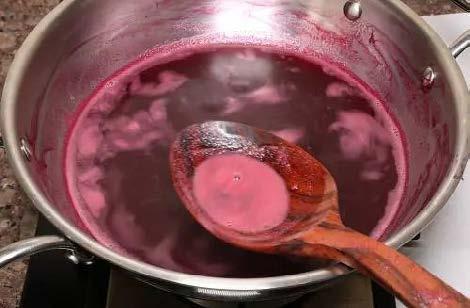
After cooling down completely the consistency should be similar to honey.
When it cools down completely, pour the pomegranate molasses into a glass bottle.
It will be thicker than it was but of pouring consistency. As it cools it begins to turn thicker. So it is time to turn off the heat.
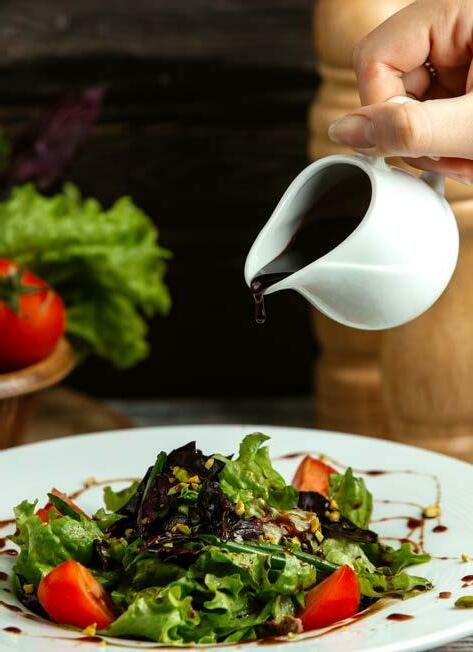
Rosa Damascena has been cultivated in the Rose Valley in Bulgaria for centuries and has become one of the symbols of Bulgaria. Bulgarian Rose Oil has been distilled for over 300 years. The first rose plantations appeared around the city of Kazanlak around the 16th century. Gradually the number of rose plantations grew occupying a large area in central Bulgaria later known as the Valley of Roses.
For more than 400 years, the Valley of Roses has been known as the world center for rose oil production The famous rose oil, of which Bulgaria is the world’s largest producer, is industrially extracted by distillation and is widely used in the pharmaceutical and perfume industries. Oil is extracted from rose flowers between 5 a.m. and noon before the dew evaporates. Leaves that need to be processed immediately are diluted with water at a ratio of 1 to 4 and heated in distillation chambers.
To make just 1 milligram of pure rose essential oil you need 50.000 individual petals (around 1500 rose flowers) which is the equivalent of around 3.5 kilograms (7-8 pounds) of rose petals. Rose essential oil production is one of the most labor intensive processes due to the very small amount produced. That is why it is so precious and is called ‘liquid gold’.

Learning how to make rose oil at home lets you get the skin and hair benefits of roses at a fraction of the price. Besides, you can also make money from it. You’ll basically make an oil infusion, which means that you’ll soak roses in a carrier oil and let them soak. Then the carrier oil will have the properties of the roses.

Roses (strongly scented and chemical free)

Once you’ve harvested your rose flowers you need to remove the petals and lay them out to dry a little as any moisture could result in the oil becoming rancid. Avoid putting them in the light or sun.
Collect the petals carefully and put them in the jar. Fill the jar to the top with the dry rose petals, and the pour in the carrier oil. If you don’t have enough petals to fill the jar, use a smaller one, you want to just cover them with oil, and not leave any space for air.
Container (glass jar with air tight lid)


Cloth Oil (almond, grapeseed or jojoba oil - something that has little or no scent to avoid over powering the delicate smell of the roses)

Seal the lid tightly and leave for 3 -6 weeks in a warm cupboard, away from light or sunshine (airing cupboard is perfect), shake the jar every day or when you remember incase any air bubbles form. Naturally, the longer you infuse, the more concentrated your oil will be.
After at least 2 weeks, strain the spent rose petals through some muslin cloth, or a fine sieve, into a container (bowl, jug etc).


Squeeze as much oil as you can from the petal pulp and you are left with a beautiful, delicately scented rose oil.






Soft, buttery, versatile, and maddeningly delicious, what’s not to love about French Crepes? Each year on February 2 is what French people call ‘La Chandeleur’ – Candlemas in English – or the day when a whole country eats crepes!
It is a tradition, and most French families eat French crepes for the occasion. No one knows for sure why crepes are associated with a once-religious holiday, but there are a few hypotheses.
It is possible that crepes – essentially large and thin pancakes – symbolize a round, yellow sun coming back after the winter.


Another possibility is that it’s around that time that winter wheat harvests happen. If flour was made in too large batches, making crepes was a way to use it.

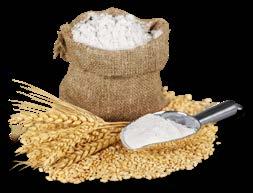
There are actually two authentic French crepe recipes depending on the filling you are going to use: savoury or sweet. But, French people usually serve sweet crepes for breakfast or snacks.
50 gr of melted butter 4 eggs

half a liter of milk 2 table spoons of sugar page 41

a pinch of salt

Step 1
Mix all dry ingredients in a bowl.
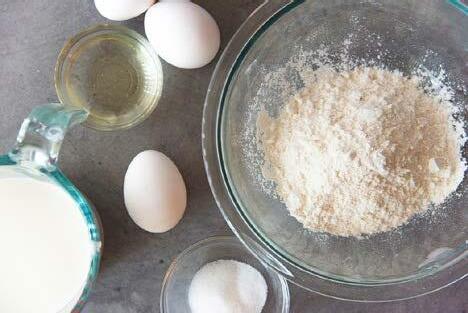
Step 2
Add all the wet ingredients into a jug and stir to combine.

Step 3
Add about half of the milk mixture into the flour and whisk to create a smooth, thick paste. Only mix until the flour has no lumps. Add the rest of the liquids and mix in.

This will ensure that the flour will not form lumps for the crepe batter.

You absolutely don’t need an expensive crepe pan to make perfect basic crepes. A regular non-stick skillet / pan works just as well. You could use a French skillet pan to make the crepes as well, just make sure to butter the pan well so that the crepes don’t stick. If you’re new to making crepes, a regular non-stick pan is the best option.
When the pan is hot, brush the surface with butter or oil.

Add batter into the pan. Swirl the pan as you add the batter. Work quickly to spread the batter evenly around the pan all way to the edges, so that you have a smooth edge. Continue to swirl the pan (and occasionally shake it gently), to move the batter around and fill the middle of the pan as evenly as possible. Finally, you are supposed to have a thin layer of crepe.
After cooking the crepes, stack them up on a wire rack or plate and cover the homemade crepes with a clean cloth napkin. These easy crepes can be served warm or at room temperature with any kind of topping or filling.

Wait for browning edges before you flip over the crepe for classic French crepes.


Flip over to cook the crepes further.


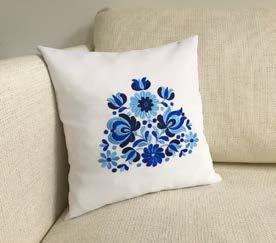

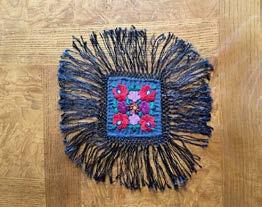





The Hungarian Matyó folk costume uses simple linen embroidery, and each colour has its own meaning. While black is the colour of the earth, from which life and the harvest sprout, red is the colour of joy, yellow is the colour of summer (that is, the colour of the sun), and blue is the colour of sorrow and of passing. After World War I, the colour green appeared and served as the colour of mourning. In remembrance of the soldiers that died in the war, aprons were embroidered around the edges with green embellishments.
The popularity of Matyó embroidery has made it into a form of auxiliary income, enabling people to buy the fine fabrics and supplies necessary for making elaborate costumes. So, if you have skills in embroidery or enthusiasm to learn how to embroider you could use the Hungarian Matyó technique and sell various products such as:

 Ornaments
Doily
Pillow Cover
Tablecloth
Ornaments
Doily
Pillow Cover
Tablecloth

Having our own family milk cow means we normally have a lot of wonderful raw milk on hand. Besides drinking it and making kefir or yogurt an easy way to use milk is by making homemade mozzarella cheese. But, don’t think you have to have a family milk cow to make homemade mozzarella. Oh no! You can use store-bought milk for great results!
Thankfully, you don’t need a whole lot of special equipment to make homemade cheese. Here is a quick list of the cheesemaking equipment you need:
A large stockpot with a lid
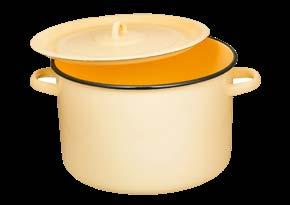
A meat thermometer

A timer

A long, thin knife to cut the curd

Big jars or pitchers to capture the excess whey food-grade rubber gloves



• 1 + 1/4 cup water
• 1 + 1/2 teaspoon citric acid
• 1/4 rennet tablet or 1/4 teaspoon liquid rennet
• 1 gallon milk (not UHT, preferably raw)
• 1 teaspoon kosher salt
Step 1
Measure out 1 cup of water. Stir in the citric acid until dissolved. Measure out 1/4 cup of water in a separate bowl. Stir in the rennet until dissolved.
several parallel cuts vertically through the curds and then several parallel cuts horizontally, creating a grid-like pattern. Make sure your knife reaches all the way to the bottom of the pan.

Step 2
Pour the milk into the pot. Stir in the citric acid solution. Set the pot over mediumhigh heat and warm to 35°C (90°F), stirring gently.
Step 3
Remove the pot from heat and gently stir in the rennet solution. Count to 30. Stop stirring, cover the pot, and let it sit undisturbed for 5-10 minutes.
After ten minutes, the milk should have set, and it should look and feel like soft silken tofu. If it is still liquidy, re-cover the pot and let it sit for another five minutes. Once the milk has set, cut it into uniform curds: make
Place the pot back over the heat, set to low, and bring the curds up to 40°C. You want to stir them occasionally being very gentle. Try not to break up the curds.
Now remove the pot from the heat and let it stand for about 5-10 minutes.

Put a sieve or strainer over a bowl and using the large slotted spoon scoop out the curds and into the sieve. Gently press the curds down to squeeze out the whey.
Once you’ve removed all of the curds to the strainer, let them drain for about 10

minutes. At this point, the curds will mostly be in one large mass.
Stretch and need the mozzarella cheese for a few minutes, then shape it into a ball.
While you’re waiting, put the pot with the whey in it back on the stove and add the tablespoon of salt. Heat over medium heat to 80-85°C. Then, put your gloves on and get ready to stretch some cheese!


Immerse the cheese curd into the heated whey to heat it up. Once the cheese starts to soften, start stretching and folding the dough with your hands or with a spoon, it will be hot.

The mozzarella can be used immediately or kept refrigerated for a week. To refrigerate, place the mozzarella in a small container. Mix a teaspoon of salt with a cup of cool whey and pour this over the mozzarella. Cover and refrigerate.

Making a clay pot is one of the most popular and oldest traditions in Latvia like the most of other countries. Here we will add instructions on how to make clay vessels/pots and handle them carefully.

To create a clay pot using the glueing technique, you need two things - clay and hands. You need about a handful of clay to make one small pot, but if you want to make a bigger pot, of course more. Clay prepared for molding can be purchased in several places, you just have to search for information and go to the most interesting or the nearest place; this purchase can also be an interesting excursion. Clay is usually sold packed in 10 kilogram packages, and you can make many dishes or figurines from one package. In places where clay mass is sold, you will also meet knowledgeable people who will certainly not refuse advice.
To create an ornament on the finished product, you can use any thing that is at hand - a stick found in nature, a knife, the handle of a spoon, an ice cream stick or something else. If you like pottery, you can go to the store and buy special tools for working with clay or other plastic materials. The round side of a spoon or any other rounded, completely smooth object will be useful for polishing a clay pot.
Making a clay pot on a wheel is a little different than doing it freehand. It requires centering and anchoring the pot on the wheel first, and then using your hands to shape the pot as desired. Using a pottery wheel to make a pot takes practice and patience, so don’t worry if your first pot doesn’t turn out exactly how you hoped it would. Just keep practicing!
Tap on the clay mound in the center of the wheel to anchor it; if you don’t, the clay may fly off.


Keep your hands wet at all times to prevent the clay from sticking to your hands.
Apply gentle pressure to the sides of the clay while forming an indentation in the center to create the gap you’ll use to form the center of the bowl.
Take your time forming the walls of the pot and use both hands to craft the shape of your pot.

Place 1 to 1.5 kg of clay on the pottery wheel. Position the clay in the center of the wheel.
Apply gentle pressure to the sides of the clay with both hands. Place your hands on the sides of the mound of clay near the bottom of the mound with your thumbs on top of the mound. Apply even pressure to the clay as the wheel turns.



Start the wheel on a low speed. A low speed is all you need to anchor the clay and lubricate it.
As you apply pressure to the side of the clay, slowly move your hands up around the sides of the clay. The clay should start to form a cone with a flat top as you do this.
Tap on the mound of clay to center it and anchor it to the wheel. While the wheel is spinning, tap the top and sides of the clay with the palm of your hand several times to ensure that it is centered.
Once your clay is in the form of a cone, place 1 hand on top of the clay and start pressing down with light to medium pressure. Keep the other hand on the side of the clay to maintain the shape.
Your hands need to be wet while you work a clay on the wheel. Otherwise they will stick to the clay.

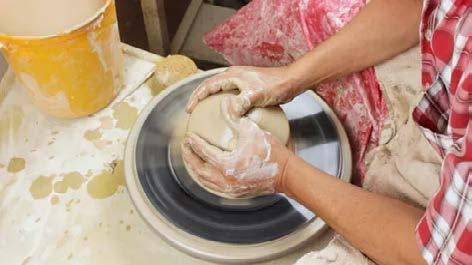

Look at the clay from the top and locate the center. Then, press down with 1 thumb to form an indentation while the rest of your fingers stay outside of the clay to help maintain the desired shape. Use both thumbs to gradually widen the opening as the wheel turns while your fingers guide the clay on the outside of the bowl.




Position your other hand on the opposite side of where your hand is inside the pot. This is so that your hands can work together to shape the walls of the pot.

Compress the rim with your fingertips to shape it. The rim of the pot will be wide at this point, but you can use your fingertips to define the shape. Squeeze the clay around the top of the pot while the wheel is still turning. Keep doing this until the rim is the desired thickness.
Press your hands together gently and slide them up towards the rim of the pot while the wheel is turning. Maintain even pressure and keep the wheel turning at a low to medium speed.
After you are finished with your pot, shut off the wheel. Then, use a wire to loosen the pot from the wheel by sliding the taut wire under the base of your pot right up against the wheel.
Insert 1 of your hands into the pot and position them near the bottom of the pot. Your fingers should be bent slightly to help you create the curve on the inside of the pot. Press the back (fingernail side) of your index and middle fingers against the inside of the pot and slowly move your hand up towards the rim.
Once you have finished shaping your pot, you can fire it and glaze it. This is required for making the pot waterproof and more durable. A glaze also creates an attractive glossy finish on the pot. You will need to use a kiln to do the initial bisque firing, and then apply the glaze and fire the pot again.

• You may also let your pot air dry, but keep in mind that the pot will not be waterproof if you let it air dry. Air drying can take several days to weeks depending on the size of your pot.
• If you do not have a kiln, you could try visiting a local pottery studio and asking if they will fire and glaze the pot for you. They might be willing to do so for a fee.


• Make sure you cover all of the pot with glaze except for the bottom. If you get any glaze on the bottom, your pot will stick to the shelf in the kiln.
• Follow the instructions on the glaze so you know how many layers to apply.
Pronounced ‘puh-row-gee’ this dish has multiple spellings including pierogie, perogie, or perogy. Any way you spell it, pierogi (which is actually plural but we do still call them pierogies) are one of Poland’s greatest dishes, and an eastern European favorite.

Pierogies are dough that’s filled with either potatoes and cheese or sauerkraut. But potatoes are the most traditional. They can be boiled or panfried—or cooked in an air-frier if you have one—and make an excellent appetizer, light lunch, or dinner. Boiled or fried is simply a matter of personal preference. Boiled pierogi are softer, more like ravioli, while pan-fried have a crispy exterior, similar to pan-fried dumplings.
Traditionally served with sour cream, onions, and bits of crispy bacon, pierogi are surprisingly easy to assemble and can be frozen for later use.
Because it is not complicated to make, is delicious, can be filled with various ingredients and can be stored by freezing, pierogi is one of the best foods to sell. For instance, by the 1960s, pierogi were a common supermarket item in the frozen food aisles in many parts of the United States and Canada, and are still found in grocery stores today.
• 6 cups all purpose flour
• 2 cups cold water divided
• 2 eggs beaten
• 6 tablespoons canola or vegetable oil
• 2 teaspoons salt
•
• 1.5 kg baking potatoes

• 1 medium white onion finely diced
• 1/3 cup butter divided
• 4 ½ cups cheddar cheese finely shredded
• Salt to taste
• White pepper to taste, or very fine black pepper
• 1 onion diced or thinly sliced 2 tablespoons butter or as needed for
Place flour in a large bowl. Add eggs, oil, salt, and 1 ½ cups of the water. Mix well to form a dough, adding more water if needed.

Knead the dough on a flat surface until smooth and pliable, about 4-5 minutes.

Cover with plastic wrap and allow the dough to rest at room temperature for at least 30 minutes or up to 1 hour
Peel the potatoes and cut into 2-inch cubes. Place in a large pot of salted water and bring to a boil. Cook the potatoes for 15 minutes or until tender.
While the potatoes are cooking, heat 2 tablespoons butter in a medium skillet over medium-low heat. Add onions and cook until tender without browning.
Once potatoes are cooked, place in a large bowl and mash. Add onions, cheese, and remaining butter. Continue mashing until the potatoes are very smooth.



Using half of the dough, roll it out 1/8 thick. Cut out circles of dough using a 3” cookie or biscuit cutter.

Scoop 1 ½ tablespoons of filling and roll into a ball, place on the pierogi dough. Fold the dough over to form a semi-circle and pinch the edges closed. Place on a baking sheet.
Pierogies can either be cooked or frozen at this point.
Step 4
Heat 3 tablespoons butter in a large skillet. Add sliced onions and cook on mediumlow heat until tender. Remove onions from the pan and set aside for serving.
Bring a large pot of salted water to a boil. Gently add pierogies and cook until they float, about 2-4 minutes. Remove with a slotted spoon.




Transfer pierogies to a hot skillet (adding more butter if needed) and cook until browned on each side, about 5 minutes.
Serve warm with onions and sour cream.
Horchata is a typical Spanish drink and is made with tiger nuts (chufas in Spanish). There are other delicious horchata recipes in Latin America, but they’re made with other nuts or even with rice and some of them are not vegan.


Traditional horchata tastes amazing, but is made with a lot of refined white sugar, so is not the healthiest beverage you can drink. You can always use dates to make plant milks, but there are so many natural sweeteners available.
The ingredients are so inexpensive and really easy to get, except maybe the tiger nuts, but feel free to use other nuts (I love almonds). Horchata only lasts about 2 days in the fridge, but it tastes so good, so you’ll probably want to drink it all at once!
4 cups water

250 gr tiger nuts or other nuts you like

The peel of a lemon

1/4 cup + 1 tablespoon granulated sugar

1/4 teaspoon cinnamon powder

Add the tiger nuts into a large bowl and fill with 2 cups of water, and soak them for 24 hours.

Transfer the liquid into a pitcher, add white sugar and mix together, add the pitcher into the fridge for at least 4 hours to let all the flavors develop.
After 24 hours drain the tiger nuts, rinse them under cold water and add half of them to a blender, also add 1 cup of cold water and blend until well combined, then add the remainder of the tiger nuts, the remainder of the cold water (1 cup), a 1/4 teaspoon of cinnamon powder and some fresh lemon zest, blend until well combined.
Run the mixture through a sieve and into a large bowl, using a wooden spoon push down on the mixture to release all the liquid into the bowl, once done discard what is in the sieve.

After 4 hours your horchata de chufas is ready to be served, give the horchata a quick mix and transfer into tall glasses. Remember to always serve it very cold.


i. https://www.erasmus-entrepreneurs.eu/ ii. https://www.blueland.com/
iii. https://muze.gov.tr/muze-detay?SectionId=HTY01&DistId=HTY iv. https://www.coursehero.com/file/138932341/10-Build-your-own-FutureEntrepreneurship-Workbook-author-World-Bank-Grouppdf/ v. https://entrecomp.thinqi.com/repository/resource/9b54766e-3c61-4668-b2c03fae88031891/en
vi. https://en.wikipedia.org/wiki/List_of_social_entrepreneurs vii. https://www.managementstudyguide.com/ viii. https://www.firstrepublic.com/insights-education/five-types-of-entrepreneurshipmeaning-and-defining-characteristics ix. https://www.uschamber.com/co/run/business-financing/small-business-fundingguide
x. https://michelineandrews.com.au/what-are-artisan-products/ xi. https://ec.europa.eu/eurostat/statistics-explained/index. php?title=Unemployment_statistics#Youth_unemployment xii. https://en.wikipedia.org/wiki/Aleppo_soap xiii. https://www.indianhealthyrecipes.com/ xiv. https://www.wikihow.com
xv. https://www.theflavorbender.com/category/recipes/breakfast-brunch-recipes/ waffles-pancakes-crepes/ xvi. https://en.wikipedia.org/wiki/Pierogi








